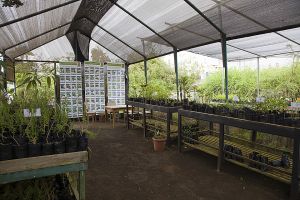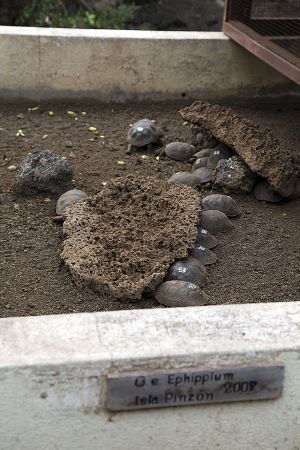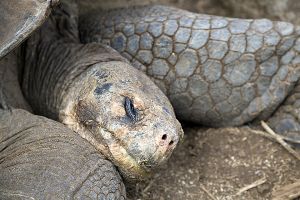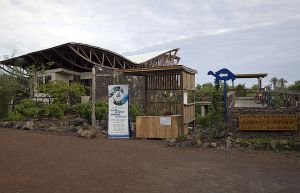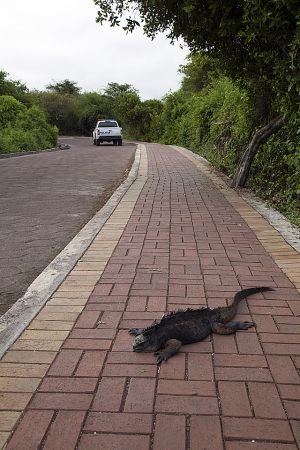Well, we have one less additional passenger than expected on the Beagle, so the total number of passengers is now 6 – a couple from California, a couple from Germany, and two of the singles from last week. The crew of seven still out-numbers the passengers. Apparently many of the boats operating in the Galapagos are operating at around 50% capacity, which is unusual for this time of year.
Santa Cruz has the largest population in the Galapagos. No-one is sure of the exact number, although it is thought to be around 25,000. Ecuador conducted a nationwide census a couple of weeks ago, so a more precise number should be known soon.
In the morning, we travel to Los Gemelos, and to visit a ranch that lies in the migratory path of the giant tortoises. These are mostly large males, and pretty much go where they wish – barbed wire fences are easily destroyed by them, the local cattle ignore them, and it is not unusual to be driving done a dirt track to encounter one resting in the middle of the road.
The afternoon is spent at the Charles Darwin Research Station, where they are breeding giant tortoises in captivity, to be released at the location where the eggs were found. They are also growing native plant species to be sold to the locals, to replace the introduced species found in gardens in the built up areas. Blackberry vines are also an introduced pest, which is proving difficult to eliminate.
In the late evening, we set sail for Floreana Island, in the south-eastern part of the archipelago.


